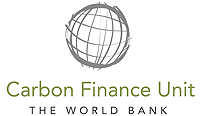Overview
The objective of the Laguna de Bay Community Waste Management Project was to implement a set of small-scale waste management projects in the Laguna de Bay watershed, a watershed that is heavily degraded and has ever-increasing environmental pressures from more than 10 million people and thousands of industries that produce largely untreated solid and liquid wastes. The continued degradation has resulted in increasing greenhouse gas emissions from waste, and through the waste management interventions under the project, both environmental degradation and greenhouse gas emissions have been reduced.
The Laguna de Bay Community Waste Management Project was made up of two different Clean Development Mechanism (CDM) projects: methane recovery by wastewater treatment and methane avoidance by composting. The purpose of the wastewater treatment activities was to reduce organic water pollution from piggeries, industries, slaughterhouses and municipalities in the watershed while reducing greenhouse gas emissions. The purpose of the solid waste composting activities was to reduce the waste disposed in landfills and the associated methane emissions in the Region through composting of organic matter.
Benefits
Laguna de Bay watershed was a priority watershed for environmental sustainability goals because it contains 13 percent of the population of the Philippines and the lake and its tributaries supports fisheries, recreation, domestic water supply and provide aesthetic value for the many small, historic towns in the area. At the time of implementation of the project, water quality in the lake’s tributaries was very poor especially in the west bay, and accumulation of solid wastes in these areas due to poor solid waste management systems has contributed to organic pollution and aesthetic problems. The project contributed to the environmentally sustainable development of the area through better organized waste management practices, increasing the amount of waste to be safely handled and increasing the lifetime of disposal sites.
The project also provided new sources of financing to increase and improve the effectiveness of public investments. Through carbon finance, the project provided additional revenues for operation and maintenance and encourage the sustainability of the interventions.
Through the participatory planning and implementation process the project also provided an avenue for participation in watershed planning and management with specific attention made for inclusion of marginalized groups (indigenous peoples, women and others) in the process. Disclosure of municipal performance on environment projects was also enhanced as the composting and associated emissions reductions during implementation was made available to these groups and to the general public. As part of the process, the project also provided opportunities for training of a wide group of stakeholders in watershed planning and management.
